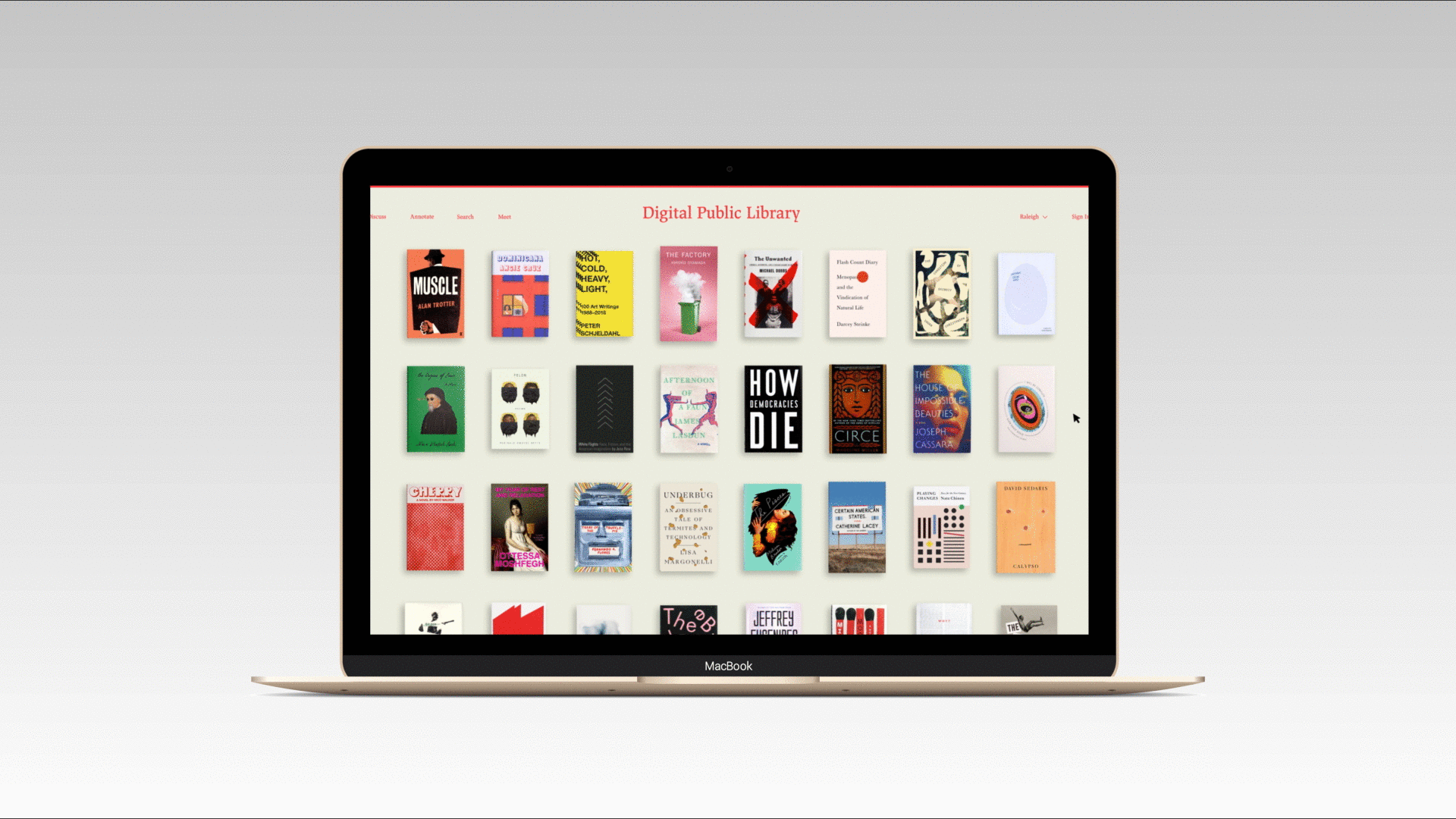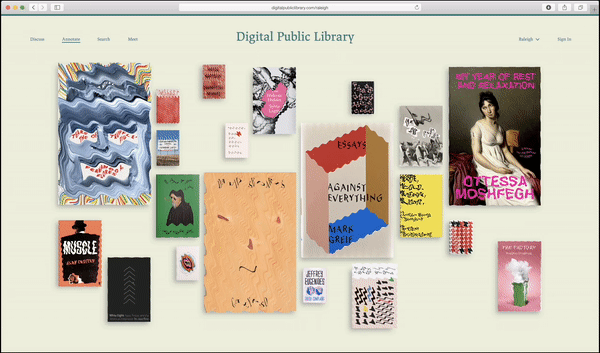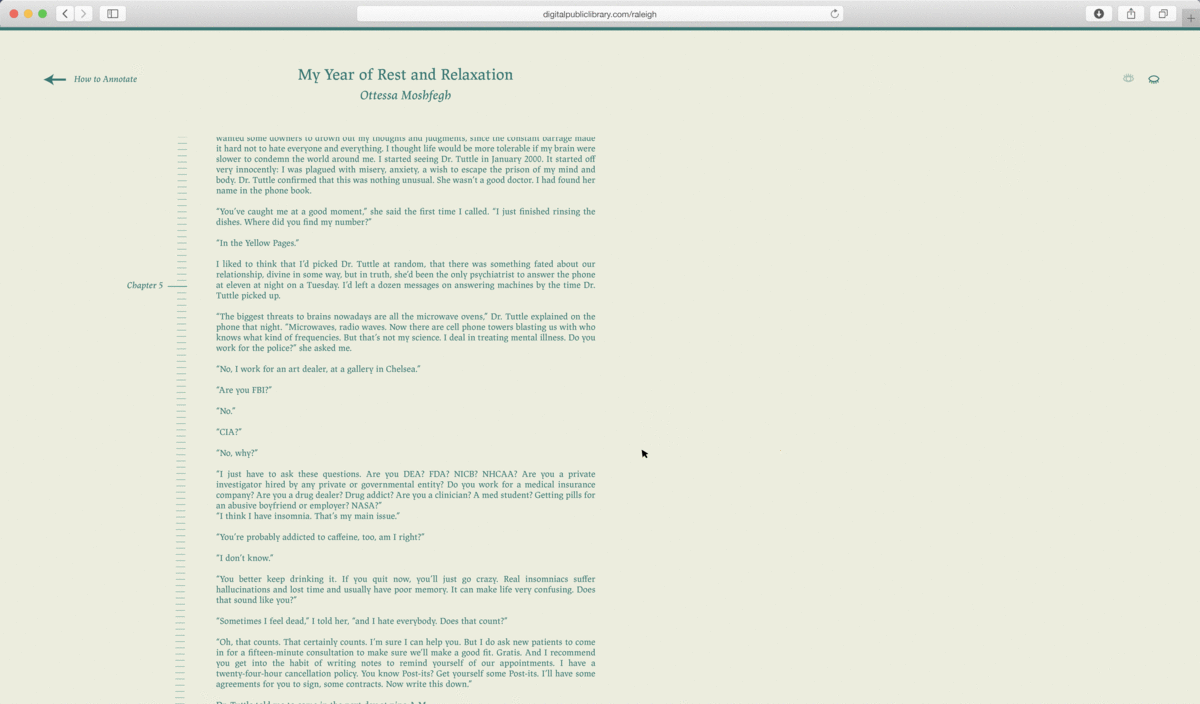Published on Then Finally: MGD Final Projects

Question:
Subquestions:
Subquestions:
How can the design of a digital library, used by adults at home, afford the community benefits traditionally provided by physical libraries?
How can a digital conversation tool visualize diversity to provide social inclusion?
How can a digital annotation system visualize content traffic to provide a sense of belonging?
How can a digital search tool provide open-ended browsing for serendipitous discovery?
How can the digital library platform synthesize search, discussion, and annotation tools facilitate community benefits?
How can a digital conversation tool visualize diversity to provide social inclusion?
How can a digital annotation system visualize content traffic to provide a sense of belonging?
How can a digital search tool provide open-ended browsing for serendipitous discovery?
How can the digital library platform synthesize search, discussion, and annotation tools facilitate community benefits?









Explorations of digital annotations.

How a user might explore the digital library space.
Abstract:
Local public libraries exist as an essential part of a community’s social infrastructure. Libraries supply access to resources, space for leisure and social encounters, and opportunities for education. Libraries facilitate community wellbeing through a diverse environment, increased awareness of community activity, and provide opportunities for serendipitous discovery. However, these benefits are often unmatched by libraries’ online counterparts, digital libraries. At present, digital libraries act as databases of media resources, functioning effectively as online warehouses. Faced with the fact that libraries are sought out as social spaces, as well as the reality that communities increasingly congregate online, the design of digital libraries should take into consideration the social component of information seeking. Focusing specifically on search, discussion, and annotation tools, this study investigates how the design of a digital library can afford the community benefits provided by a physical public library. The outcomes of this investigation suggest the effectiveness of motion as an indicator of presence, the opportunity for meaningful online experiences through purposeful limitation of technology, and increased engagement aided by user autonomy.

